2024 Must Have Text to Speech Software A Review
2024 Must Have Text to Speech Software A Review
Table of Contents
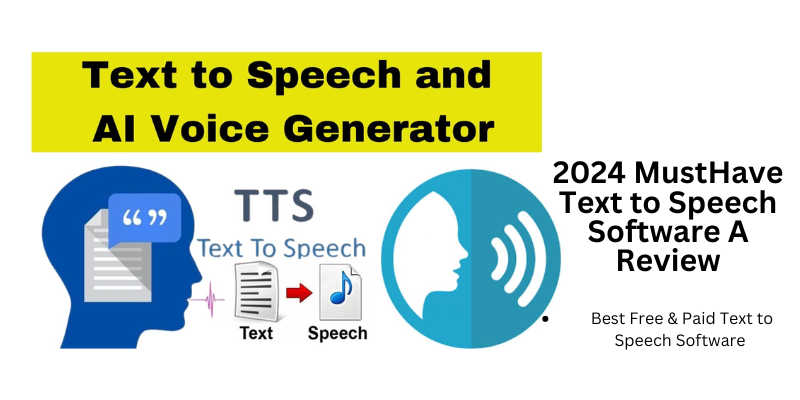
The Best Text to Speech Software of 2024: Enhancing Accessibility and Creativity
In 2024, text-to-speech (Text to Speech) technology has reached new heights, offering an array of options for individuals and businesses looking to transform written content into spoken words. Whether you need to improve accessibility, create engaging voiceovers for content, or simply enjoy hands-free reading, the best Text to Speech software available today can meet those needs. Here’s a look at the top text-to-speech software of 2024, catering to different requirements and preferences. Below we will list the 2024 Must Have Text to Speech Software A Review you will enjoying reading.
1. Murf AI: The Versatile Choice
Murf AI continues to dominate the Text to Speech market with its impressive versatility. Known for its natural-sounding voices and user-friendly interface, Murf AI supports over 120 voices in multiple languages. It’s perfect for content creators who need high-quality voiceovers, offering features like voice customization, background music, and real-time editing. Whether you’re producing videos, podcasts, or e-learning materials, Murf AI has the tools you need to make your content stand out.
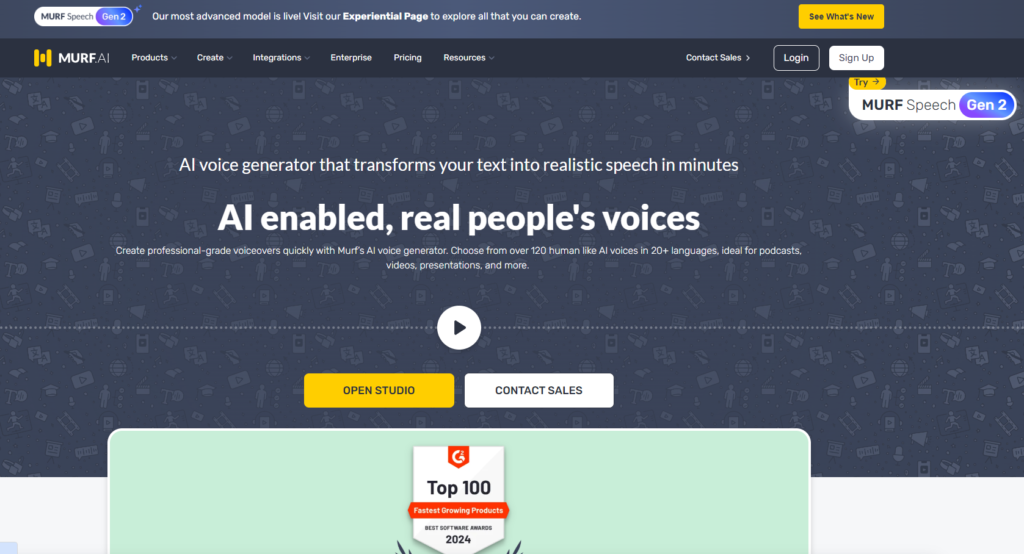
How to Start a Youtube Channel in Guyana
2. Speechify: The Reader’s Companion
For those who love reading but need a hands-free option, Speechify remains a top pick. With its ability to convert text from PDFs, websites, and even emails into speech, it’s the go-to app for students, professionals, and anyone who wants to consume content on the go. Speechify’s AI-powered voices are remarkably natural, making long listening sessions comfortable and enjoyable. Plus, it syncs across devices, so you can pick up where you left off, no matter where you are.
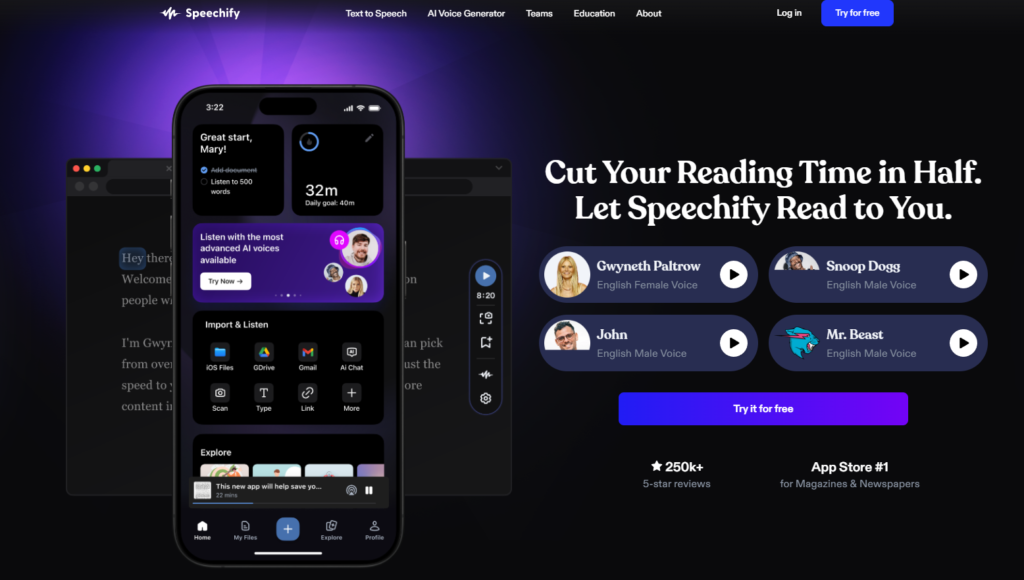
Guyanese Publisher Make Money Blogging
3. NaturalReader: Accessibility at Its Best
NaturalReader is one of the best choices for those who prioritize accessibility. It’s widely used in educational settings, particularly for helping students with learning disabilities like dyslexia. NaturalReader offers both online and desktop versions, with free and paid plans that cater to different needs. Its voices are clear and natural, and the software is compatible with various file formats, including PDFs and Word documents.
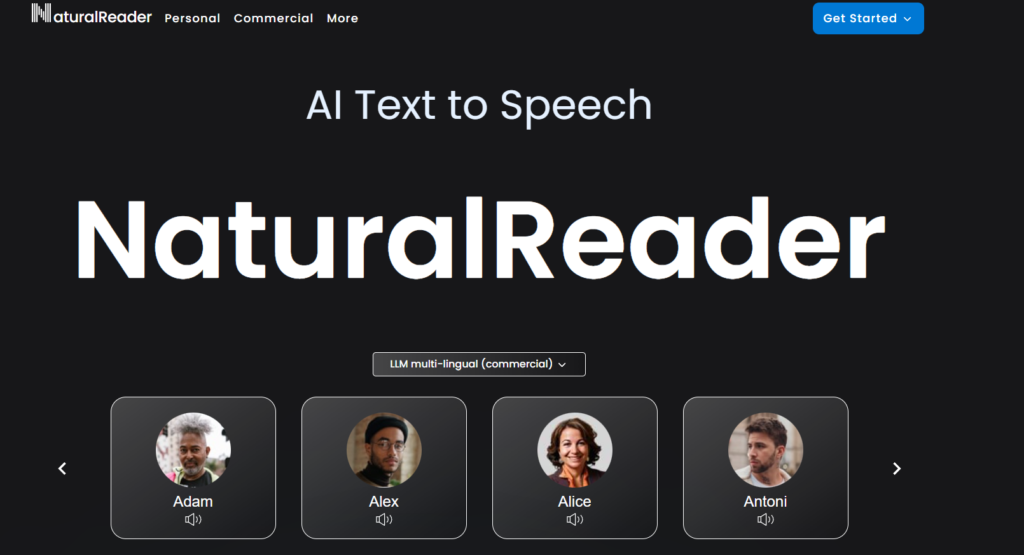
Make Money : How to Start A Graphic Design Service in Guyana
4. LOVO AI: Cutting-Edge Creativity
LOVO AI has emerged as a favorite among content creators, especially those looking for a wide range of voice options. With over 500 voices in more than 100 languages, LOVO AI offers unmatched diversity. It also features advanced tools like voice cloning, allowing users to create custom voices that match specific characters or brand identities. This makes LOVO AI an excellent choice for video creators, game developers, and advertisers.
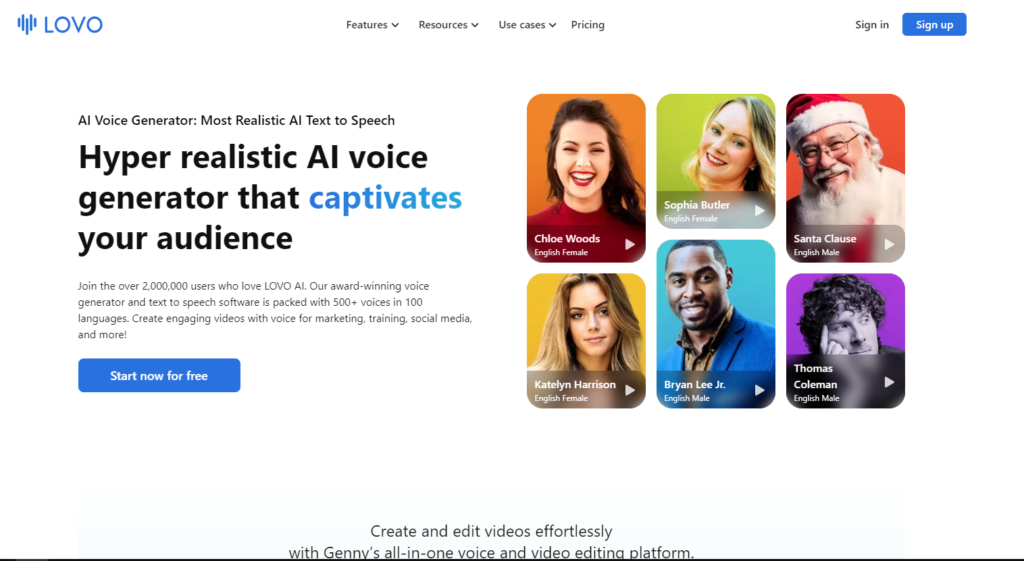
Unlocking Opportunities: 17 Free Online Courses to Enhance Your Skills 🔥
5. Google Cloud Text to Speech: For Developers and Businesses
Google Cloud Text-to-Speech is a powerful tool for businesses and developers looking to integrate Text to Speech into their applications. It offers a wide range of voices powered by Google’s WaveNet technology, ensuring natural-sounding speech. The service supports multiple languages and dialects, making it ideal for global businesses. Additionally, Google Cloud’s API allows for seamless integration into apps, websites, and devices, making it a versatile option for tech-savvy users.
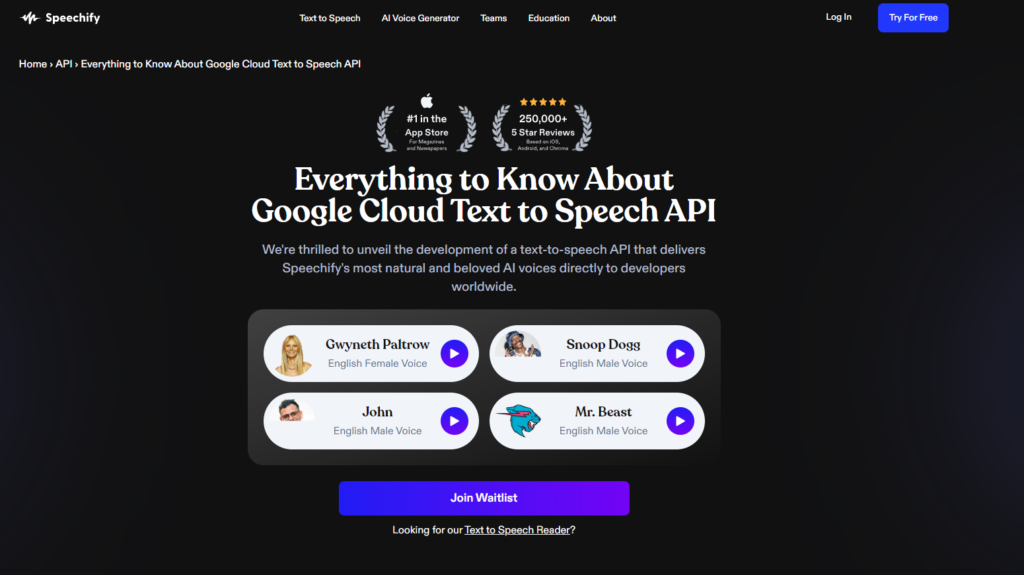
6. Speechelo: Affordable Quality
If you’re looking for a cost-effective solution without sacrificing quality, Speechelo is worth considering. It’s particularly popular among small businesses and individual content creators who need professional-grade voiceovers on a budget. Speechelo’s voices are natural and expressive, and the software allows users to adjust tone, pitch, and breathing patterns to achieve the desired effect. Plus, with a one-time fee, it offers great value for money.
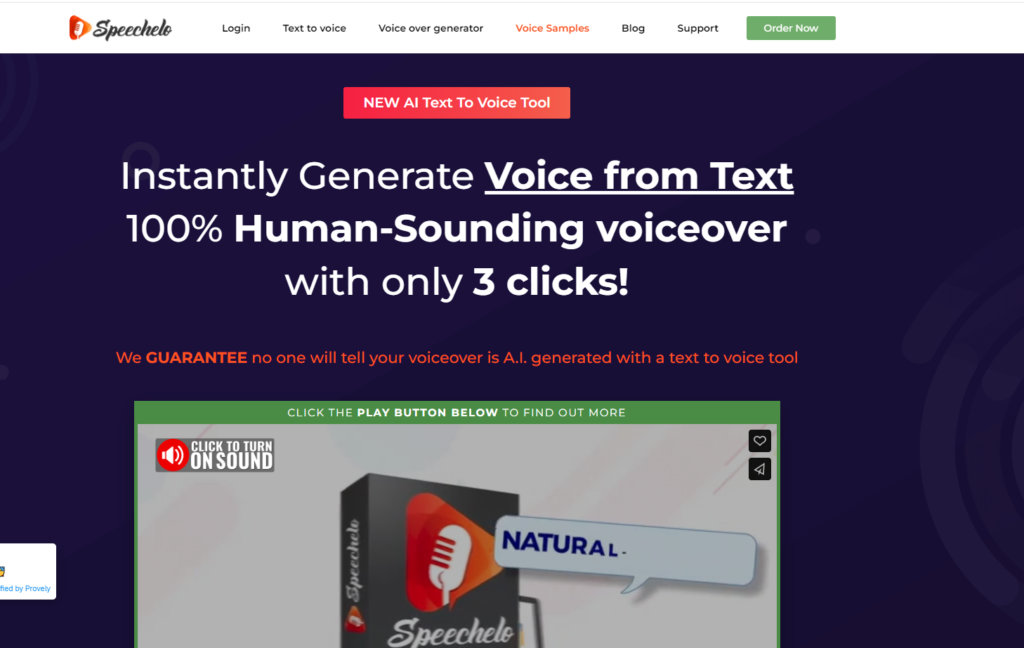
7. Amazon Polly: Scalable Solutions
Amazon Polly is another excellent option for developers and enterprises. It converts text into lifelike speech, using deep learning technologies to deliver high-quality audio. Polly supports a variety of languages and is highly scalable, making it suitable for large-scale applications. Its seamless integration with AWS services also allows businesses to incorporate Text to Speech into their cloud-based solutions with ease.
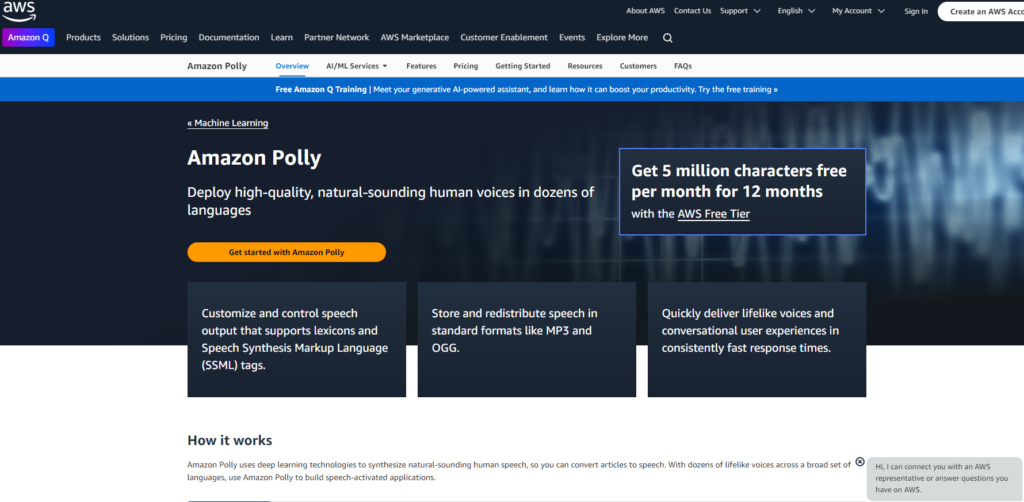
Why You Should Use Text-to-Speech Software ?
In today’s digital age, accessibility and efficiency are paramount, and Text to Speech (Text to Speech ) software has emerged as a powerful tool to meet these needs. Whether you’re an individual looking to enhance productivity or a business aiming to improve customer engagement, Text to Speech software offers a range of benefits that make it an essential technology. Here’s why you should consider integrating text-to-speech software into your daily routine or business operations.
1. Improves Accessibility
One of the most significant benefits of Text to Speech software is its ability to make digital content more accessible to people with visual impairments, dyslexia, or other reading difficulties. By converting written text into spoken words, Text to Speech allows these individuals to consume information more easily, ensuring that they can engage with content just like everyone else. This feature is not only beneficial for individuals but also for businesses and educational institutions striving to create inclusive environments.
2. Enhances Personal Productivity
For those constantly on the go, Text to Speech can be a game-changer. Whether you’re commuting, exercising, or simply multitasking, Text to Speech allows you to consume written content without having to sit down and read it. You can listen to articles, emails, reports, or books, turning what might otherwise be idle time into productive time. This flexibility in how and when you consume content can significantly enhance personal productivity.
3. Supports Multilingual Capabilities
Many Text to Speech tools offer multilingual support, making it easier to access content in different languages. This feature is particularly useful for businesses operating in global markets or for individuals learning a new language. By listening to content in the target language, users can improve their pronunciation, comprehension, and overall language skills.
4. Ensures Brand Voice Consistency
For businesses, maintaining a consistent brand voice across all customer touchpoints is crucial. Text to Speech software allows companies to create and use consistent voiceovers for their digital content, including websites, apps, and customer service platforms. This consistency helps in building a strong brand identity and enhances the overall customer experience.
5. Reduces Costs
Hiring professional voiceover artists for every piece of content can be expensive. Text to Speech software offers a cost-effective alternative by providing high-quality, human-like voices that can be customized to suit different needs. This not only saves money but also speeds up the content creation process, as voiceovers can be generated in minutes.
6. Offers Customization Options
Text to Speech software often comes with a range of customization options, allowing users to choose from different voices, adjust the speed of speech, and even modify pronunciation. This level of customization ensures that the output is tailored to the user’s specific needs, making the content more engaging and easier to understand.
7. Enhances Education and Learning
Text to Speech technology is increasingly being used in educational settings to support students with different learning styles. For auditory learners, listening to content can be more effective than reading it. Additionally, Text to Speech can help students with learning disabilities by providing an alternative way to access and process information. In language learning, Text to Speech aids in improving listening skills and pronunciation by offering native-like speech patterns.
8. Creates More Engaging Content
In an era where attention spans are shrinking, creating engaging content is more important than ever. Text to Speech software can bring written content to life by adding an auditory element, making it more dynamic and interesting. This is particularly effective in eLearning modules, marketing videos, and podcasts, where audio plays a critical role in retaining the audience’s attention.
9. Supports Efficient Content Consumption
With the growing amount of information available online, Text to Speech can help users consume content more efficiently. Instead of reading through long articles or documents, users can listen to the content while performing other tasks. This efficiency is especially beneficial for professionals who need to stay updated on industry trends but have limited time to read.
Exploring Text-to-Speech and Speech Recognition: Pros, Cons, and Challenges
Text-to-Speech (Text to Speech ) and Speech-to-Text (STT) technologies have seen significant advancements in recent years. While they offer considerable benefits, they also come with certain limitations. In this article, we’ll explore the pros and cons of these technologies, focusing on their applications, especially in education and accessibility.
What Are the Cons of Text-to-Speech?
Despite its advantages, Text to Speech technology has some drawbacks:
Lack of Naturalness: Even with advanced algorithms, many Text to Speech systems sound robotic and lack the natural flow of human speech.
Limited Emotional Expression: Text to Speech voices often struggle to convey emotions, making it challenging to use in contexts where tone and mood are crucial.
Pronunciation Errors: Text to Speech systems can mispronounce words, especially those with complex or non-standard pronunciations, leading to misunderstandings.
Dependency on Accurate Text: The quality of the Text to Speech output heavily depends on the accuracy of the input text, including proper punctuation and grammar.
Accessibility Issues: While Text to Speech helps those with visual impairments, its effectiveness can be reduced if the technology is not user-friendly or adaptable to different languages and dialects.
What Are the Advantages of Speech-to-Text?
Speech-to-Text (STT) technology offers several benefits:
Increased Efficiency: STT allows users to transcribe speech quickly, saving time compared to manual typing.
Accessibility: It benefits individuals with physical disabilities who may find typing challenging, making communication easier and more inclusive.
Multitasking: STT enables users to dictate text while performing other tasks, enhancing productivity.
Real-time Transcription: STT can provide real-time captions, which is useful for people with hearing impairments or in noisy environments.
Language Learning: STT can aid language learners in practicing pronunciation and improving their speaking skills.
What Are the Benefits of Text to Speech?
Text-to-Speech technology offers numerous advantages:
Accessibility: Text to Speech helps individuals with visual impairments or reading disabilities by reading out written content, making information more accessible.
Language Learning: Text to Speech aids in learning new languages by providing accurate pronunciation and helping learners with listening skills.
Content Consumption: Users can listen to content on the go, turning text-based materials into audio, which is especially useful for busy individuals.
Enhanced Learning for Students: Text to Speech can assist students with learning disabilities by providing an alternative way to access written information.
Cost-Effective: Text to Speech can be a cost-effective solution for generating voiceovers, narrations, or automated customer service responses.
What Are the Pros and Cons of Texting?
Texting is a widely used form of communication, but it has its pros and cons:
Pros:
- Convenience: Texting allows for quick and easy communication without the need for real-time interaction.
- Record Keeping: Text messages serve as a record of conversations, which can be referred to later.
- Accessibility: Texting is accessible to individuals who are deaf or hard of hearing.
Cons:
- Miscommunication: The absence of tone and non-verbal cues can lead to misunderstandings.
- Distraction: Excessive texting can be a distraction, especially in social or professional settings.
- Limited Expression: Texting can limit the expression of emotions and complex ideas, which might require more nuanced communication.
What Are the Pros and Cons of Speech Recognition?
Speech recognition technology offers several benefits but also comes with challenges:
Pros:
- Hands-Free Operation: Users can control devices or dictate text without using their hands, increasing convenience and safety.
- Accessibility: It provides an alternative input method for individuals with physical disabilities.
- Efficiency: Speech recognition can speed up tasks like writing emails, searching the web, or controlling smart devices.
Cons:
- Accuracy Issues: Background noise, accents, and speech impediments can affect the accuracy of speech recognition.
- Privacy Concerns: Speech recognition devices often require constant listening, raising concerns about data privacy and surveillance.
- Limited Vocabulary: Some systems may struggle with specialized or less common vocabulary, leading to errors.
What Are the Challenges with Text-to-Speech?
Text to Speech technology faces several challenges:
- Naturalness of Voice: Achieving a natural-sounding voice remains a significant challenge, with many systems sounding artificial.
- Contextual Understanding: Text to Speech systems may not always grasp the context, leading to inappropriate emphasis or intonation.
- Customization: Personalizing Text to Speech voices to fit specific needs or preferences is still limited in many systems.
- Integration: Ensuring seamless integration with various platforms and applications can be difficult, especially in complex environments.
Pros and Cons of Free Text-to-Speech
Free Text to Speech tools are widely available, but they come with their own set of pros and cons:
Pros:
- Cost-Effective: They provide a no-cost solution for converting text to speech.
- Ease of Use: Most free Text to Speech tools are user-friendly and easy to access.
Cons:
- Limited Features: Free tools often lack advanced features like voice customization, natural-sounding voices, and multi-language support.
- Advertisements: Many free Text to Speech tools include ads, which can be disruptive.
- Privacy Concerns: Free tools may collect user data, raising privacy concerns.
Pros and Cons of Text-to-Speech for Students
Text to Speech technology has specific implications for students:
Pros:
- Learning Support: Text to Speech can help students with reading disabilities by providing auditory reinforcement of text.
- Multisensory Learning: It allows students to engage with content in both visual and auditory formats, enhancing comprehension.
- Accessibility: Students with visual impairments can access written material more easily.
Cons:
- Overreliance: Students may become overly reliant on Text to Speech , potentially hindering the development of their reading skills.
- Disengagement: Listening to text may lead to lower engagement compared to active reading.
Pros and Cons of Text to Speech in PDFs
Text to Speech for PDFs can be a useful tool, but it has some limitations:
Pros:
- Access to Content: Text to Speech can make PDF content accessible to individuals with disabilities.
- On-the-Go Learning: Users can listen to PDF content while multitasking.
Cons:
- Compatibility Issues: Not all PDFs are compatible with Text to Speech , especially those with complex layouts or images.
- Text Extraction Errors: Text to Speech may struggle with extracting text from scanned PDFs or documents with non-standard formatting.
Advantages of Text to Speech
Text-to-Speech technology offers several key advantages:
- Enhanced Accessibility: It makes content accessible to individuals with visual impairments or reading disabilities.
- Time-Saving: Users can listen to text while performing other tasks, saving time.
- Language Learning Aid: Text to Speech supports language learners by providing accurate pronunciation and aiding in listening practice.
- Content Repurposing: Text to Speech allows written content to be repurposed as audio, expanding its reach.
Benefits of Text-to-Speech for Students with Disabilities
For students with disabilities, Text to Speech technology offers significant benefits:
- Increased Accessibility: Text to Speech helps students with visual impairments or dyslexia by reading out text, allowing them to access the same content as their peers.
- Improved Comprehension: Listening to text can improve comprehension, especially for students who struggle with reading.
- Independence: TTS empowers students to independently access and engage with educational material.
Why Is Text-to-Speech So Bad?
While TTS technology has improved, it still faces criticism for several reasons:
Unnatural Voice: Many TTS systems still sound robotic or flat, lacking the natural inflections of human speech.
Pronunciation Errors: Mispronunciation of words remains a common issue, leading to potential misunderstandings.
Limited Emotional Range: TTS voices often fail to convey emotion, making them less effective in scenarios where tone is important.
Technical Limitations: Despite advances, TTS still struggles with certain linguistic nuances, dialects, and accents.
Text-to-Speech Limitations
Text-to-Speech technology, while useful, has some inherent limitations:
Voice Quality: The quality of TTS voices can vary, with some sounding unnatural or robotic.
Contextual Challenges: TTS may not always interpret context correctly, leading to odd phrasing or emphasis.
Content Suitability: Not all content is well-suited for TTS, especially complex or highly technical material.
Dependency on Text Quality: The effectiveness of TTS depends heavily on the quality of the input text.
Text-to-Speech Not Realistic
The realism of TTS voices is a common concern:
Lack of Human Touch: TTS voices often lack the warmth, emotion, and subtlety of human speech.
Inconsistent Performance: TTS systems may perform well with certain types of content but falter with others, especially when dealing with slang, idioms, or complex syntax.
Technology Gaps: Current technology still has gaps in mimicking human-like speech, particularly in conveying nuanced emotions or handling unexpected changes in pitch and tone.
The text-to-speech software landscape in 2024 is diverse, catering to a wide range of needs from accessibility and education to content creation and business integration. Whether you need a versatile tool like Murf AI, a reader’s companion like Speechify, or a developer’s ally like Google Cloud Text-to-Speech, there’s a TTS solution that can help you achieve your goals. As AI continues to advance, these tools are becoming more powerful, making it easier than ever to bring text to life with natural, expressive voices.
Also read How to Start a Youtube Channel in Guyana
![]()




